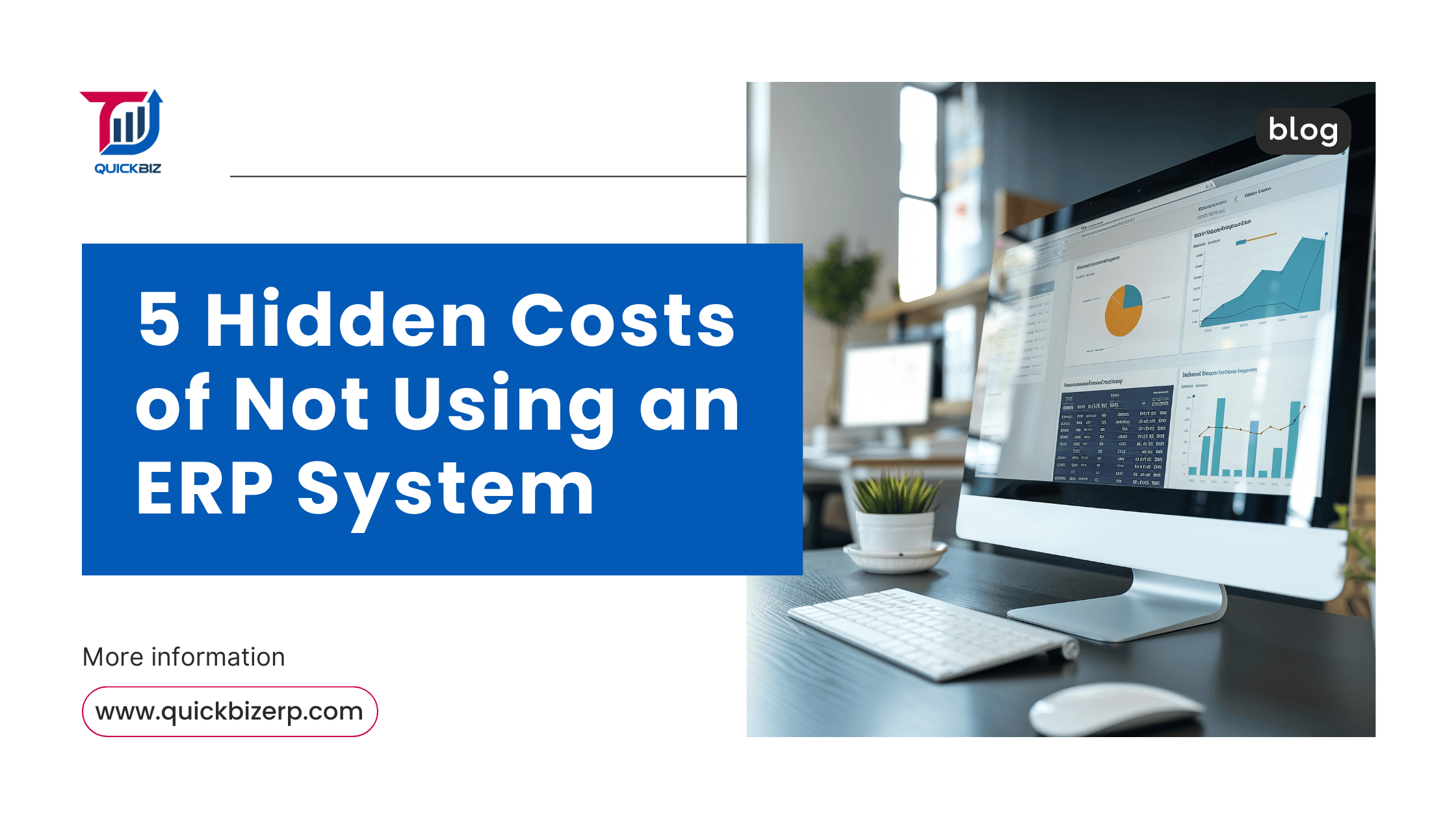5 Hidden Costs of Not Using an ERP System

Introduction
Managing a business in today’s fast-paced world requires more than just hard work; it demands efficiency, precision, and adaptability. ERP (Enterprise Resource Planning) systems play a vital role in achieving these goals by streamlining business processes and centralizing data.
However, many businesses hesitate to adopt ERP systems due to the perceived high upfront costs. What often goes unnoticed is the price businesses pay for not implementing an ERP system—costs that are hidden, yet significant enough to hinder growth and profitability.
In this blog, we’ll dive into the five hidden costs of not using an ERP system and explain why investing in one is crucial for long-term success.
1. Lost Productivity and Time Wastage
Without an ERP system, manual data entry and reliance on spreadsheets consume valuable time that could be better spent on strategic tasks. Employees often struggle with repetitive tasks like reconciling data across multiple platforms, resulting in:
- Inefficient workflows: Teams work in silos, leading to delays in sharing critical information.
- Data duplication: Manually entering the same information across different systems increases errors and wastes time.
An ERP system automates these processes, allowing your team to focus on value-adding activities and boosting productivity.
2. Operational Inefficiencies
Disconnected systems and outdated processes create bottlenecks that directly impact your operations:
- Cost of errors: Errors such as duplicate invoices or mismatched inventory figures can lead to financial losses.
- Delayed decision-making: Outdated or inaccurate data hinders timely and informed decision-making.
By integrating all business functions into one centralized platform, an ERP eliminates inefficiencies and ensures smoother operations. Discover how to align sales and inventory efficiently.
3. Missed Opportunities
Operating without an ERP system makes it harder to seize growth opportunities:
- Inability to scale: Managing increased workloads with outdated systems is challenging, limiting your ability to expand.
- Lost revenue: Without real-time data and insights, businesses miss trends or fail to act on new opportunities quickly.
ERP systems provide analytics and real-time insights, helping businesses adapt to market changes and capitalize on new opportunities. Explore proven ways to leverage ERP analytics to drive business.
4. Compliance Risks and Penalties
Manually managing compliance with industry regulations and financial reporting is error-prone, exposing businesses to:
- Compliance errors: Missing deadlines or submitting inaccurate reports can lead to audits and penalties.
- Regulatory fines: Failing to adhere to tax laws or safety regulations can result in costly fines.
ERP systems automate compliance tracking and reporting, reducing the risk of errors and ensuring adherence to legal requirements. Read more about the key stages of ERP implementation and its role in compliance.
5. Higher Long-Term Costs
While many businesses focus on the upfront cost of ERP systems, they often overlook the accumulating expenses of not having one:
- Maintaining disparate systems: Running multiple standalone tools becomes expensive over time.
- Fixing errors: The cost of resolving issues caused by human error or inefficiency adds up quickly.
ERP systems consolidate all operations under one roof, reducing long-term costs and simplifying maintenance.
How ERP Eliminates Hidden Costs
Implementing an ERP system not only addresses these hidden costs but also offers tangible benefits:
- Centralized operations: All business functions work in harmony, eliminating silos and inefficiencies.
- Real-time insights: Make informed decisions based on accurate and up-to-date data.
- Long-term savings: Streamlined processes and compliance reduce operational and financial risks.
Learn how to maximize your ERP ROI and ensure you get the most value out of your investment.
Conclusion
The hidden costs of not using an ERP system—lost productivity, inefficiencies, missed opportunities, compliance risks, and higher long-term expenses—can significantly impact your business's bottom line.
Instead of viewing ERP as a cost, see it as an investment that drives growth, efficiency, and profitability.

